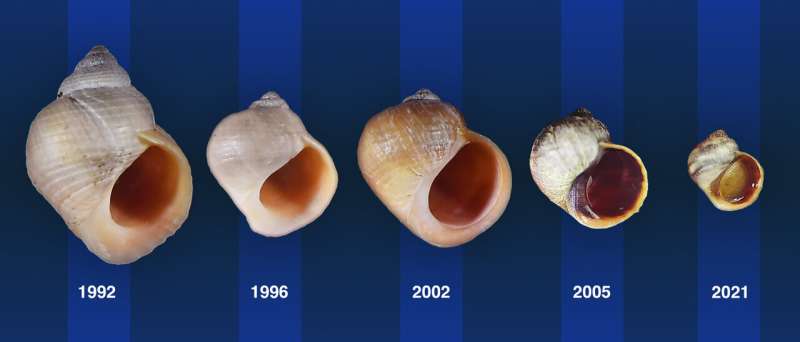Researchers from the Institute of Science and Technology Austria, Nord University, and the University of Gothenburg have witnessed the remarkable evolution of marine snails in a 30-year experiment. After a toxic algal bloom wiped out the snail population on a small rocky islet, the researchers reintroduced a distinct population of the same snail species and observed as it rapidly evolved to resemble the lost population. This study provides valuable insights into how species can adapt to environmental changes and the importance of genetic diversity in facilitating rapid adaptation. Evolution and genetic diversity are key topics explored in this fascinating real-world experiment.

Witnessing Evolution in Marine Snails
In 1988, a toxic algal bloom devastated the marine snail populations in the Koster archipelago off the Swedish west coast. Researchers saw this as an opportunity to study the process of evolution in real time. In 1992, marine ecologist Kerstin Johannesson from the University of Gothenburg reintroduced the Littorina saxatilis snail, a common species found throughout the North Atlantic shores, to one of the affected skerries (rocky islets).
The researchers expected the snails to adapt quickly to their new environment, and their predictions were borne out. “Over the experiment’s 30 years, we were able to predict robustly what the snails will look like and which genetic regions will be implicated,” says Diego Garcia Castillo, a graduate student at the Institute of Science and Technology Austria (ISTA) and one of the authors of the study. “The transformation was both rapid and dramatic.”
Rapid Adaptation and the Role of Genetic Diversity
The researchers examined three key aspects of the snails’ evolution over the course of the experiment: their physical characteristics (phenotype), individual gene variabilities, and larger genetic changes affecting entire regions of the chromosomes, known as “chromosomal inversions.”
They found that the snails’ rapid and dramatic transformation was due to two complementary processes. First, there was a fast selection of traits that were already present at low frequencies in the transplanted Crab snail population. Second, there was gene flow from neighboring Wave snails, which could have simply rafted over 160 meters to reach the skerry.
“Some of the genetic diversity was already available in the starting Crab population but at low prevalence,” explains Anja Marie Westram, a former postdoc at ISTA and currently a researcher at Nord University. “This is because the species had experienced similar conditions in the recent past. The snails’ access to a large gene pool drove this rapid evolution.”
In the first few generations, the researchers also witnessed an interesting phenomenon called “phenotypic plasticity,” where the snails modified their shape to quickly adjust to their new environment.
The team’s findings highlight the importance of genetic diversity in facilitating rapid adaptation to environmental changes. “Not all species have access to large gene pools, and evolving new traits from scratch is tediously slow,” says Westram. “Adaptation is very complex, and our planet is also facing complex changes with episodes of weather extremes, rapidly advancing climate change, pollution, and new parasites.”
Implications for Species Conservation and Adaptation to Environmental Challenges
The researchers hope that this work will drive further research on maintaining species with large and diverse genetic makeups. “Perhaps this research helps convince people to protect a range of natural habitats so that species do not lose their genetic variation,” Westram concludes.
The study also provides valuable insights into how species can adapt to modern environmental challenges, such as pollution and climate change. “This work allows us to have a closer look at repeated evolution and predict how a population could develop traits that have evolved separately in the past under similar conditions,” says Garcia Castillo. By understanding the mechanisms of rapid adaptation, scientists can better inform conservation efforts and help species cope with the complex changes facing our planet.
